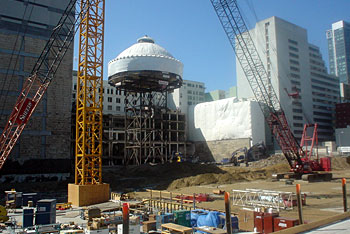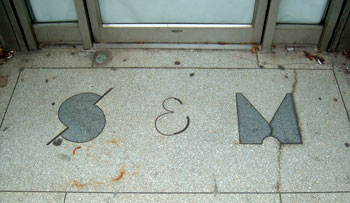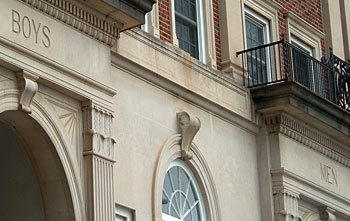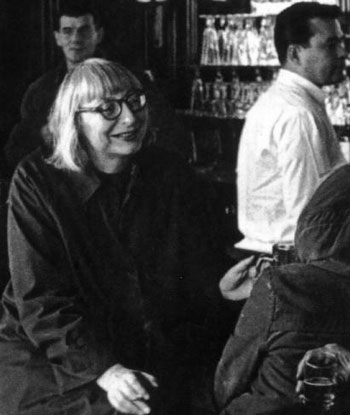To many urban planners — and assorted admirers thereof — the term “urban” is synonymous with “density” and “pedestrian- and transit-oriented”. Unfortunately, their analysis of what is and is not urban too often stops there. Which is unfortunate.
While many urban places are indeed very dense and pedestrian-oriented, and while these are often very desirable characteristics, I would argue that the only true and valid definition of “urban” is “variety”. By that, I mean a variety of people, of building types and ages and uses, of foods and other goods, of income levels, and of texture.
Without variety, you don’t have anything even remotely urban.
Cities are not planned. They are chaotic living organisms which prefer to grow in certain unencumbered organic patterns. Like plants, if they are over-trimmed, or repeatedly pruned into unnatural shapes, they will eventually either die or (at best) lose any natural appeal.
If a city is willing to bulldoze an area and rebuild it from scratch according to a well-conceived master plan, and is given enough money, much of it coming from the government in the form of tax breaks and other incentives, then creating a lively urban atmosphere from scratch is not difficult at all.
It’s impossible.
Far too many planners, both professional and “armchair”, have the mistaken notion that “increased density” is some sort of cure-all for ever imaginable urban ill. This is particularly common in sunbelt cities like Charlotte and Anaheim and Orlando, which want desperately to be perceived as “urban”, but prefer not to have old and unsightly areas near downtown. It’s a new version of the same old mentality that brought us “urban renewal” in the 1950s and 1960s. It didn’t work then, and it doesn’t work now.
The mere fact that a suburban-style shopping center is built with a more compact footprint in an inner-city location (and perhaps with some overpriced housing above it) does not make for an urban development. It makes only for a slightly denser suburban development on slightly more expensive land.
Conversely, a road packed with dowdy old shopping centers from the 1950s and 1960s which now house “unsightly” tacquerias, thrift stores, ethnic groceries, and furniture outlets is not anti-urban at all. In fact, such an area is in my view considerably more urban than a sterile stucco-clad Best Buy or Target with a few condos tastefully arranged around a central courtyard.
Yet cities around the country invariably prefer the former to the latter.
The old shopping center district is considered “blighted”, despite the fact that nearly every storefront is occupied by a revenue-producing, tax-paying business. It is far better public policy, the city decides, to offer subsidies to developers who will bring in chain retailers to serve the…ahem…general public, as long as they will do so according to a set of transit-oriented design principles foisted onto a city that will never be truly transit-friendly.
The new urbanist dream development must, by definition, be more “urban” because it has no parking lot in front and because the buildings reach all the way to the lot line, right? Never mind that none of the stores have entrances or even windows facing the sidewalk — nor that the sidewalk goes no farther than the end of the shopping center to begin with. Never mind that the “variety” of the center is limited to a choice between Whole Foods or Dean & Delucca. And, of course, never mind how many locally-owned businesses may have been displaced by this (usually subsidized) developer’s wet dream.
Urban is variety. You cannot have variety in a massive new development that is all built at one time. It just doesn’t work; the economics aren’t there. Start-ups can’t afford the rent. Even existing businesses often can’t afford to “trade up”. Besides, almost all of these developments aim at “upscale” shoppers and residents; “chains” in this case doesn’t mean Dollar Tree or Check Into Cash.
Variety requires the occasional old and unsightly building. Jane Jacobs recognized this nearly fifty years ago and most cities still haven’t caught up. There need to be new buildings too, of course, lest a creeping paralysis set in. But wholesale revitalization and reconstruction just doesn’t work. It never has. It never will.
Turn of the century planner Daniel Hudson Burnham was famous for saying “make no small plans.” He was wrong. The mantra of planners and urbanists should be “make no large plans.” Large plans destroy variety, which eliminates urbanity and kills cities.
Large-scale “historic preservation” schemes are almost as bad. They limit variety both physically, by limiting any variation in building appearances to one specific period in the past, and economically, through gentrification and disallowing certain businesses which might spoil “the mood”. Those buildings which are insufficiently decorative or happen to have been built in the wrong decade are deemed unworthy of preservation despite the fact that they may well have contributed more to the history and culture of the area than dozens of other “cuter” buildings that are spared.
I’m not against cute little pedestrian-friendly streetscapes. In fact, I’m very much in favor of them. But you can’t build them from scratch, no matter how hard you try. They must evolve over time. And by insisting on massive, overplanned “infill” developments, cities eliminate most of the possibility of that ever happening. Here’s a hint: if it involves tearing down several blocks of occupied buildings, it ain’t infill.
It’s the very same “urban renewal” mindset that, in the 1950s, destroyed many of the very streetcar strips which would seem such attractive pedestrian-oriented areas today if they were still standing. They were deemed “unsightly” and “outmoded” in the 1950s, despite the fact that many of them were still income-producers as well.
Will auto-oriented 1950s shopping centers ever have the “cool” factor that 1920s streetcar strips have today? Maybe not, but the fact that they are of a currently-unfashionable architectural vintage should not be grounds for their wholesale municipally-sanctioned (or municipally-mandated) destruction.
Urban is variety. Without a variety of buildings, old and new, and even some marginal uses, you don’t have an urban setting. Without an intermingling of people with different ethnic and economic backgrounds, and without some plain, old-fashioned ugly, junky stores serving (gasp) poor people, you do not have a city. You have a big, dense, suburb masquerading as a theme park version of a city.
If it sounds like I advocate leaving cities alone to develop in their own way, maybe that’s because I do, by and large.










